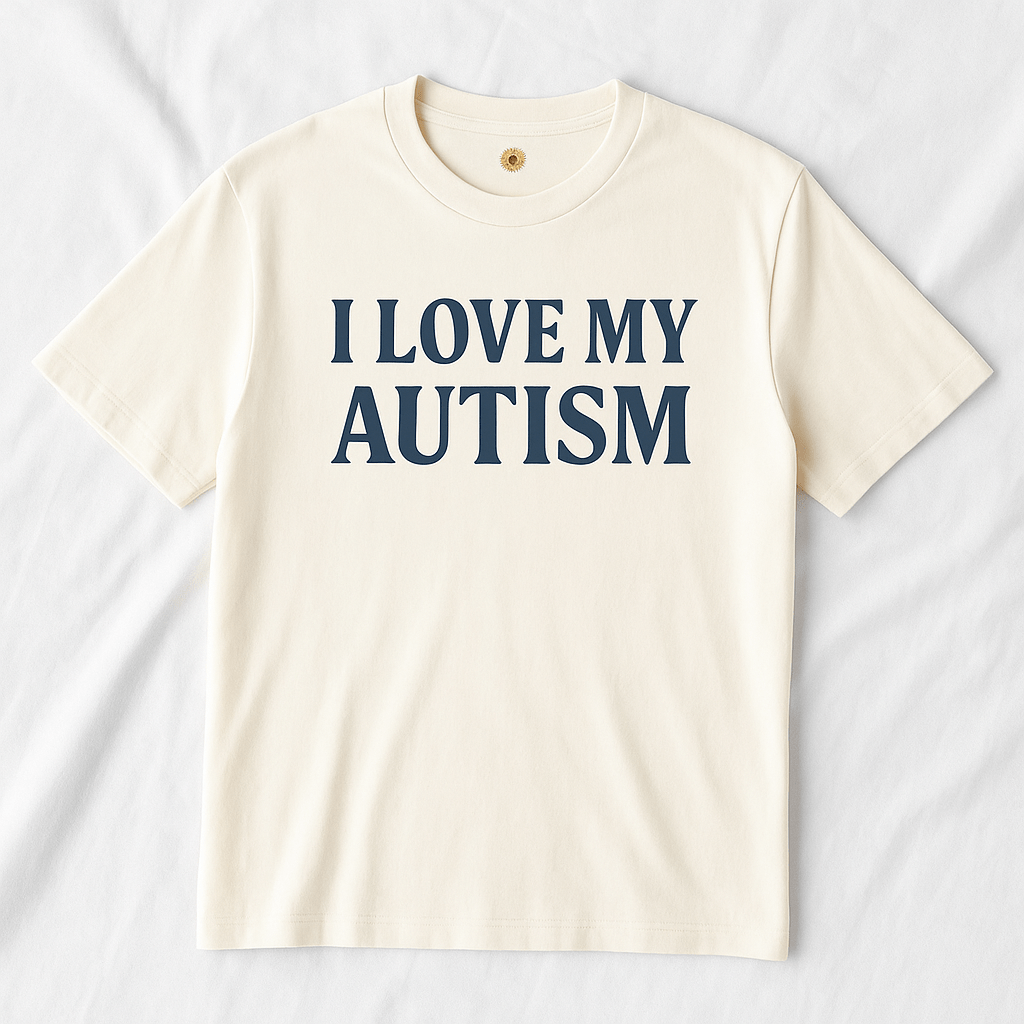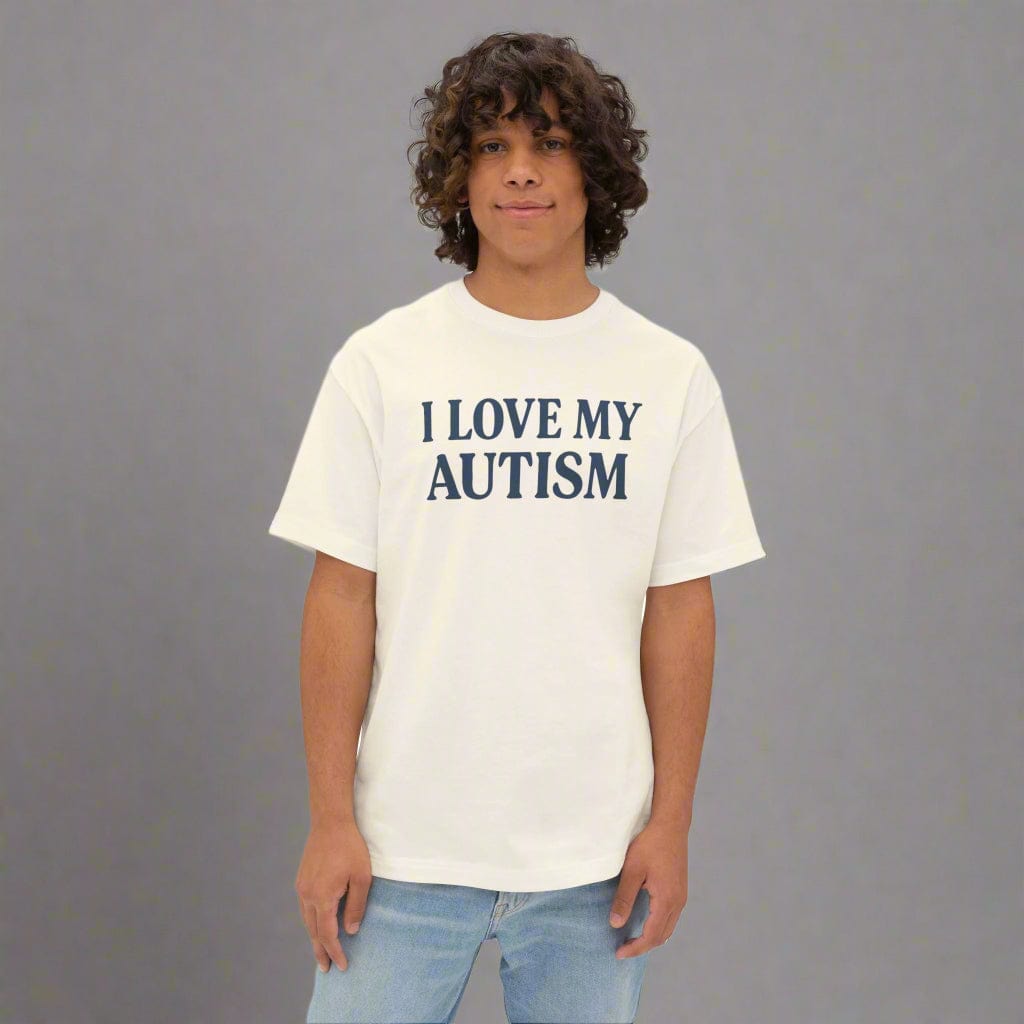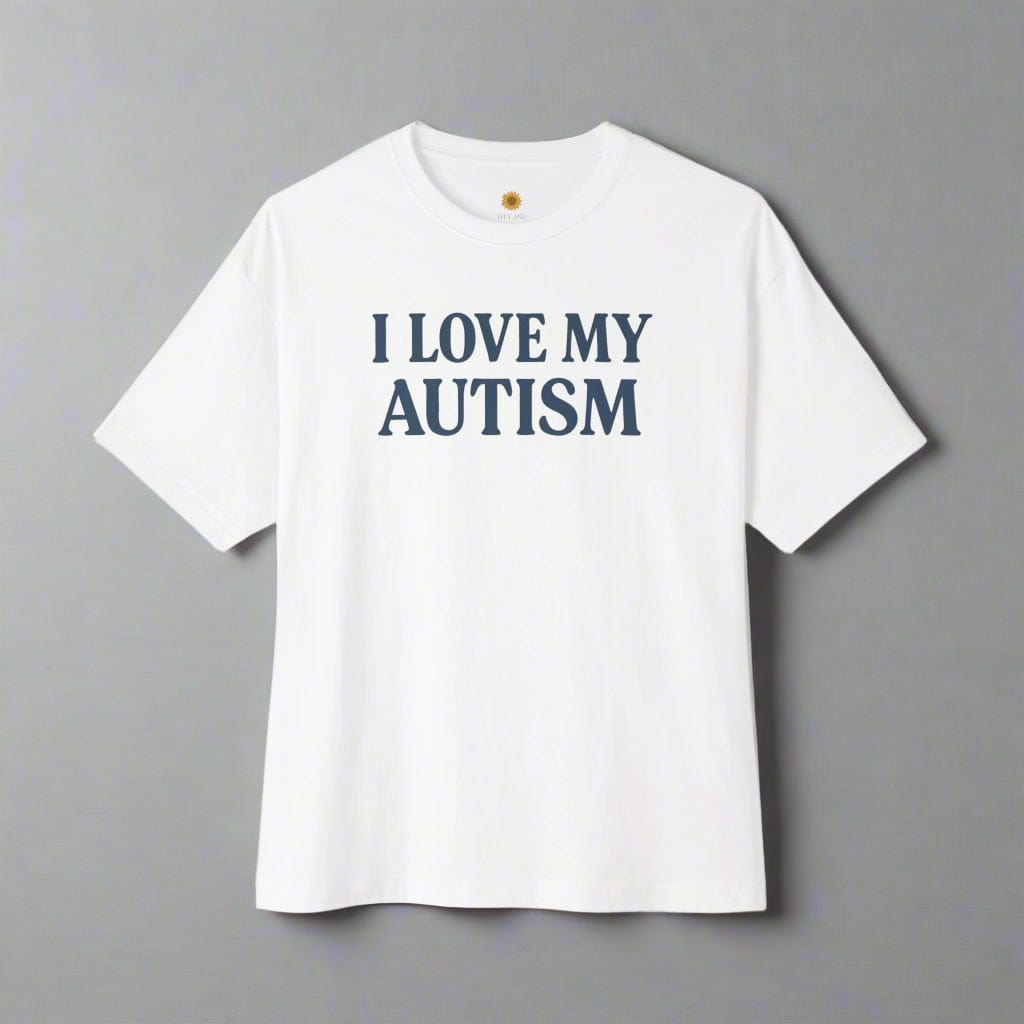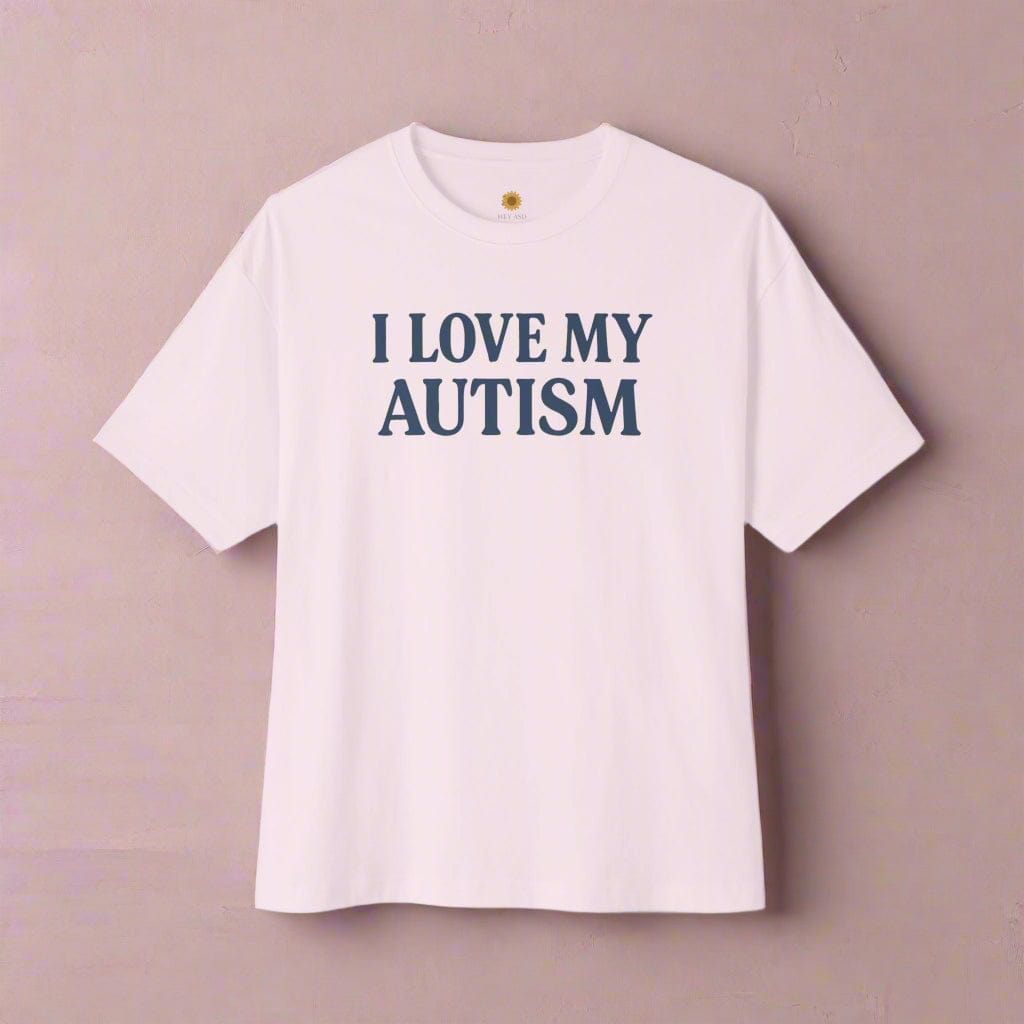Stimming in ADHD vs Autism: Similarities, Differences, and Why It Matters

Written by the HeyASD Editorial Team
Stimming is one of the most misunderstood parts of being neurodivergent. For many autistic and ADHD adults, it’s not just a “quirk” or habit — it’s a lifeline. These repetitive movements, sounds, or fidgets are the body’s built-in way of finding balance, whether that means blocking out overwhelm or sparking enough focus to stay present.
Yet online conversations about stimming often blur the lines between ADHD and autism, leaving people unsure where they fit. Do you stim because you’re autistic, because you have ADHD, or because you’re both? And does it really matter?
This guide cuts through the noise with compassion and clarity. By exploring the similarities, differences, and overlaps between autistic and ADHD stimming, we’ll reframe it for what it truly is: not a flaw to fix, but a powerful tool for regulation, self-expression, and pride.
Understanding Stimming: A Universal Experience
Stimming, or self-stimulatory behavior, is a natural part of being human. Many people engage in repetitive actions without even thinking about it, whether it's bouncing a knee during a meeting or humming a tune while concentrating. These behaviors are a way for our nervous system to regulate itself.
While stimming is universal, it plays a more central and necessary role for many neurodivergent people. Let's look closer at what these behaviors are and how they show up in everyday life for everyone.
What Is Self-Stimulatory Behavior?
Self-stimulatory behavior, or stimming, refers to any repetitive action or sound you make to help regulate your senses, emotions, or thoughts. It is a way to provide your brain with the sensory stimulation it needs, whether that means increasing input when you feel understimulated or reducing it when you feel overwhelmed. These behaviors are often performed in a repetitive manner and can be a powerful tool for self-soothing.
For many, stimming is an unconscious coping mechanism that helps create a sense of control and predictability. Think of it as your body’s way of managing internal and external environments. You might stim to calm anxiety, express excitement, or even to help yourself focus on a task.
The types of stimming behaviors can vary widely from person to person. What one person finds calming, another might not. Understanding your own patterns is the first step in harnessing stimming as a helpful tool for sensory regulation.
Everyday Stimming in Everyone’s Life
You might be surprised to learn how often neurotypical people stim. It is a common behavior that happens every day, often without conscious thought. These repetitive behaviors serve a purpose, helping to manage boredom, anxiety, or the need to concentrate. Stimming isn't exclusive to neurodivergent people; it's a shared human experience.
Have you ever found yourself doing any of the following?
-
Tapping your fingers on a desk while thinking.
-
Twirling your hair when you feel nervous.
-
Jiggling your foot while sitting for a long time.
These are all examples of stimming. They are simple, repetitive actions that provide a bit of sensory stimulation to help you regulate. Recognizing these common behaviors can help normalize stimming and reduce the stigma surrounding it. It shows that everyone’s brain seeks regulation, just in different ways and to different degrees.
Stimming and Neurodivergence: The Big Picture
While stimming is a universal human trait, it holds a different level of significance within the context of neurodivergence. For autistic people and people with ADHD, stimming is not just a casual habit but a fundamental tool for navigating the world. It is a key characteristic of these neurodevelopmental conditions.
Understanding why stimming is so central to the autistic and ADHD experience is crucial. Let's explore its role as a coping mechanism and the importance of destigmatizing these essential self-soothing movements.
Why Stimming Is Central in ADHD and Autism
For autistic people and those with ADHD, stimming is a vital coping mechanism. It is a primary way to manage sensory input that can feel overwhelming or, conversely, to create stimulation when the world feels dull. Whether you are autistic or have ADHD, stimming gives you a sense of control over your internal state.
The reasons behind the need to stim can differ. An autistic person might stim to block out distressing sensory overload, such as bright lights or loud noises. For someone with ADHD, stimming might be a way to channel excess energy to improve focus on a task.
In both cases, these repetitive behaviors are not random; they are purposeful. They are your body’s intuitive response to what it needs in a given moment, whether that’s calm, focus, or emotional release. This makes understanding your stimming a powerful act of self-awareness.
Destigmatizing Self-Soothing Movements
Unfortunately, many self-soothing movements are surrounded by stigma. Society often mislabels stimming as "weird," "disruptive," or a "bad habit" that needs to be stopped. This misunderstanding can lead to social challenges and deep-seated shame, causing many to hide or suppress their natural regulatory behaviors.
This pressure to conform can have a significant negative impact on mental health. Masking your stims requires immense energy and can contribute to conditions like autistic burnout. It's important to challenge these outdated views and advocate for acceptance. Here's why destigmatization matters:
-
It acknowledges stimming as a valid and necessary coping strategy.
-
It promotes a more inclusive and supportive environment for neurodivergent people.
-
It allows you to embrace your authentic self without fear of judgment.
Stimming in Autism: Lived Experience and Significance
For autistic people, stimming is deeply woven into the fabric of their lived experience. It is much more than just a series of repetitive behaviors; it is a primary tool for navigating a world that often presents sensory processing issues. Autistic stimming is a language of self-regulation and a visible part of autistic identity.
Many autistic adults find that embracing their stims is a key part of self-acceptance. Let's explore the specific reasons why autistic people stim and the common forms these powerful behaviors can take.
Why Autistic People Stim: Sensory, Emotional, Identity
Autistic individuals stim for reasons that are core to the autistic experience: sensory regulation, emotional management, and identity expression. The primary driver is often to manage sensory input. Stimming can help block out overwhelming sensory overload from lights, sounds, or textures, creating a predictable and calming internal rhythm. Conversely, it can also provide needed sensory input when feeling understimulated.
Emotionally, stimming is a powerful tool for regulation. It can be a way to self-soothe during times of stress or anxiety, but it's also a way to express intense joy or excitement. Have you ever flapped your hands when you felt incredibly happy? That’s stimming, too.
Ultimately, for many, stimming is an authentic part of their identity. It’s not something to be hidden but a natural expression of how their brain and body work. Embracing this is a powerful statement of autism pride.
Common Types of Autistic Stimming
Autistic stimming behaviors are incredibly diverse, but some types are more commonly associated with the autistic experience. These movements are often rhythmic and can be focused on a specific sense. The purpose is usually to create a predictable sensory experience that helps with regulation.
Do any of these common autism stimming behaviors feel familiar to you?
-
Hand flapping: Moving hands and wrists in a fast, rhythmic way.
-
Rocking: Swaying the body forward and backward or side to side.
-
Spinning: Turning in circles or spinning objects.
-
Vocal stimming: Repeating sounds, words, or phrases (echolalia), humming, or singing.
-
Visual stimming: Staring at lights, moving fingers in front of the eyes, or watching repetitive patterns.
These actions are not just habits; they are functional. Each one serves a purpose, whether it's to soothe, focus, or express an emotion that words can't capture.
Stimming in ADHD: Purpose and Patterns
For people with ADHD, stimming serves a different but equally important set of purposes. ADHD stimming is often connected to the core symptoms of the condition, such as inattention, restlessness, and the brain's need for stimulation. These behaviors are less about blocking sensory input and more about creating it to aid focus and manage energy.
Let's examine what drives stimming in ADHD and the typical forms it takes. Understanding these patterns can help you see your fidgeting not as a flaw but as a feature of your unique brain.
What Drives Stimming in ADHD?
Stimming in ADHD is largely driven by the brain's need for stimulation to maintain focus and regulate energy. The ADHD brain is constantly seeking dopamine, a neurotransmitter linked to attention and motivation. Repetitive movements can provide a low level of physical stimulation that helps engage the brain just enough to concentrate on a primary task, like listening to a lecture or reading.
Another major driver is managing excess energy and restlessness. Do you find it impossible to sit still? Pacing, fidgeting, or tapping can be an essential outlet for this physical energy, preventing it from turning into distracting impulsivity.
ADHD stimming can also be a coping mechanism for under-stimulation (boredom) or over-stimulation (anxiety). In a boring situation, a stim can keep you alert. In an overwhelming one, it can provide a focal point to ground yourself.
Typical ADHD Stims and Their Functions
ADHD stimming often looks like restlessness or fidgeting. These behaviors are typically less rhythmic and more spontaneous than many autistic stims. Their main function is to channel energy, improve concentration, or satisfy a sensory-seeking urge.
Here are some typical examples of ADHD fidgeting and stimming:
-
Finger tapping or drumming: On a desk, your leg, or any available surface.
-
Leg bouncing or shaking: A very common stim when seated.
-
Fidgeting with objects: Clicking a pen, playing with keys, or using a dedicated fidget tool.
-
Chewing: On pens, shirt collars, fingernails, or chewable jewelry.
-
Pacing or constant shifting: Moving around while talking on the phone or thinking.
Each of these actions helps the ADHD brain stay engaged and regulated. They aren't signs of inattention—often, they are what makes attention possible.
How ADHD Stimming and Autistic Stimming Overlap
The lines between ADHD stimming and autistic stimming can sometimes feel blurry. This is partly because some behaviors look identical and because of the significant genetic overlap between these two neurodevelopmental conditions. It is very common for a person to be both autistic and have ADHD.
When this happens, a person's stimming can become a blend of both neurotypes, serving multiple purposes at once. Understanding this overlap is key to making sense of your own experiences and navigating a potential dual diagnosis.
Shared Coping Styles and Similar Behaviors
While the "why" can be different, the "what" of stimming often looks the same in both ADHD and autism. Both neurotypes use repetitive behaviors as a powerful coping mechanism to navigate the world. These similar experiences can sometimes lead to confusion or misdiagnosis if only the behavior is observed without considering its function.
Some common shared behaviors include:
-
Hand flapping: An autistic person might flap from joy or sensory overload, while a person with ADHD might do it to release a burst of physical energy.
-
Rocking: Can be a deep, rhythmic motion for autistic comfort or a more restless, fidgety sway for an ADHDer trying to focus.
-
Vocalizations: Humming can soothe an overwhelmed autistic brain or help an ADHD brain stay on task.
Recognizing these shared sensory experiences helps build solidarity between the two communities. At the end of the day, both are using their bodies to get what they need.
Living With Dual Diagnoses: When Stimming Blends
Living with a dual diagnosis of autism and ADHD, often called AuDHD, means your stimming might be a complex and beautiful blend. Research suggests that a high percentage of autistic people also have ADHD, creating a unique neurotype with its own set of experiences. [Source: https://publications.aap.org/pediatrics/article-abstract/141/4/e20171377/77148/Anxiety-and-Mood-Disorder-in-Children-With-Autism] For you, a single stim could be serving multiple functions at once.
For example, you might pace around a room (a common ADHD stim) while humming a specific, repetitive tune (a common autistic stim). The pacing helps you burn off restless energy and think, while the humming provides a predictable auditory input to soothe your sensory system.
Understanding that you might be meeting both autistic and ADHD needs simultaneously is a key insight for anyone with a dual diagnosis. It validates the complexity of your experience and can guide you toward support strategies that honor all parts of who you are.
Key Similarities in Stimming Between ADHD and Autism
Despite their unique drivers, there is significant common ground in how and why autistic people and those with ADHD stim. At its core, stimming for both neurotypes is a form of self-regulation. It is a powerful, intuitive tool used to manage internal states and respond to the external world.
Both groups use stimming for comfort and are often misunderstood because of it. Let's look at these key similarities more closely to appreciate the shared experience of neurodivergent regulation.
Regulation and Comfort in Both Neurotypes
The most significant similarity is that stimming is a tool for regulation and comfort. Whether you are autistic, have ADHD, or both, repetitive behaviors are a way to find balance. For an autistic person, this might mean creating a wall of predictable sensory input to feel safe from a chaotic world. For someone with ADHD, it could mean creating just enough stimulation to anchor a wandering mind.
In both cases, stimming provides a sense of self-soothing comfort. The rhythmic, predictable nature of the movements can lower anxiety and provide a grounding sensation when you feel overwhelmed or untethered. It’s your body's way of saying, "I know how to take care of myself."
This shared function is why stimming is so essential. It’s not a meaningless tic; it is a deeply functional behavior that helps you feel more comfortable and in control in your own body and mind.
Misunderstandings and Masking Due to Stigma
Another unfortunate similarity is the experience of being misunderstood and feeling pressure to mask stimming behaviors. Because stimming can look different from neurotypical body language, it is often met with judgment, correction, or ridicule. This stigma creates immense social difficulties and can damage a person's mental health.
As a result, both autistic people and those with ADHD often learn to suppress or hide their stims. This act of "masking" is exhausting. It diverts cognitive energy away from tasks and social interaction and into performing normalcy. Over time, this can lead to anxiety, depression, and for many autistic adults, autistic burnout.
This shared struggle with stigma and masking highlights the urgent need for greater acceptance. Creating a world where stimming is understood as a valid form of regulation is crucial for the well-being of all neurodivergent people.
Key Differences: Why and How Stimming Looks Unique
While the "what" of stimming can overlap, the "why" and "how" often reveal the key differences between autistic and ADHD stimming. Understanding these distinct differences is not about pitting one against the other but about gaining clarity for your own self-knowledge. It can be a crucial part of the diagnostic criteria and personal discovery process.
These distinctions often come down to the primary function of the stim and the style of the movement itself.
Sensory Soothing (Autism) vs Focus and Energy Release (ADHD)
One of the most distinct differences lies in the primary purpose of the stim. For autistic people, stimming is predominantly a tool for sensory regulation. It helps manage a nervous system that is often highly sensitive to sensory input. The goal is often to reduce or control overwhelming stimuli or to provide a predictable, soothing sensation.
For people with ADHD, stimming is more often a tool for cognitive and physical regulation. It helps generate stimulation to combat under-arousal and improve focus, or it provides an outlet for hyperactivity and restlessness. The goal is frequently to release energy or to keep the brain engaged.
This fundamental difference in purpose is a helpful way to distinguish between the two, even when the behaviors look similar.
|
Feature |
Autistic Stimming |
ADHD Stimming |
|---|---|---|
|
Primary Function |
Sensory soothing and emotional regulation. |
Focus enhancement and energy release. |
|
Main Goal |
To manage sensory overload or underload; to self-soothe. |
To improve concentration; to manage restlessness/hyperactivity. |
|
Typical Trigger |
Overwhelming environments, intense emotions, sensory needs. |
Boredom, need to focus, excess energy, anxiety. |
Different Movement Styles: Rhythmic vs Restless
The quality and pattern of the movements themselves can also be a clue. Autistic stimming often involves more rhythmic, consistent, and sometimes prolonged movements. These actions are designed to create a predictable and soothing sensory loop. Think of the steady beat of rocking back and forth or the consistent motion of hand flapping.
In contrast, ADHD stimming tends to be more restless, spontaneous, and less patterned. The movements might be faster, more erratic, or change frequently. This reflects the need to release bursts of energy or to create quick, novel stimulation to keep the brain engaged.
Consider these different movement styles:
-
Rhythmic Stims (more common in autism): Rocking, swinging, consistent humming.
-
Restless Stims (more common in ADHD): Fidgeting, leg bouncing, pen clicking, pacing.
-
Shared Stims (can be either): Hand movements that might be rhythmic (autism) or more fidgety (ADHD).
Triggers and Motivation: What Brings on Stimming?
What kicks off a stimming session? The triggers and motivations behind stimming are another area where we see clear distinctions between the autistic and ADHD experience. Understanding what prompts you to stim is key to understanding what your body and brain are trying to tell you they need.
For autistic people, the triggers are often environmental and sensory. For those with ADHD, they are frequently related to internal states of boredom or restlessness. Let's look at these unique triggers.
Environmental Sensory Triggers in Autism
For many on the autism spectrum, stimming is a direct response to environmental sensory triggers. The world can be a place of intense, unpredictable sensory input, and stimming is a way to manage that. Sensory overload is a primary trigger, where the brain becomes overwhelmed by too much information.
Common environmental triggers include:
-
Loud or unpredictable noises: Sirens, crowds, background chatter.
-
Bright or flashing lights: Fluorescent lighting, sunlight, screens.
-
Strong smells or tastes: Perfume, cleaning products, certain foods.
-
Unwanted touch or textures: Scratchy clothing, crowded spaces.
Stimming helps create a predictable, internal focus that can block out or dampen this external chaos. It can also be triggered by intense emotions—both positive and negative—as a way to regulate the powerful feelings that come with them.
Boredom, Restlessness, or Dopamine-Seeking in ADHD
In contrast, the triggers for ADHD stimming are often internal, related to the brain's regulation of attention and energy. A primary trigger is under-stimulation, or boredom. In a situation that isn't engaging enough, the ADHD brain will create its own stimulation through fidgeting or movement to stay alert.
Other major triggers for ADHD symptoms include:
-
The need to focus: Stimming can provide just enough background stimulation to help the brain concentrate on a more complex or less interesting task.
-
Restlessness: An internal feeling of needing to move can trigger pacing, leg bouncing, or other stims as an outlet.
-
Dopamine-seeking: These behaviors can provide small, quick bursts of dopamine, which helps with motivation and attention regulation in the ADHD brain.
While overstimulation can also be a trigger, it often manifests as a need to release anxious energy, rather than the sensory-blocking function seen in autism.
Impact of Stimming on Daily Life and Self-Identity
Stimming is not just an isolated behavior; it has a profound impact on daily life and your self-identity. How you relate to your stims can shape your social interactions, your confidence, and your overall mental health. Navigating a world that often misunderstands these behaviors is a significant part of the neurodivergent experience.
Learning to embrace stimming as a valid part of yourself is a journey toward authenticity and empowerment, giving you a greater sense of control.
Navigating Social Spaces While Stimming
Stimming in public, at work, or in other social spaces can be challenging. Because of stigma, you might worry about being judged, stared at, or told to stop. This can lead to a difficult choice: do you mask your stims to fit in, or do you stim freely and risk negative reactions?
Masking can make social interactions more difficult because you're using precious energy to suppress your natural regulatory movements. On the other hand, stimming openly can sometimes invite unwanted attention or misinterpretation of your social cues.
Finding a balance that works for you is key. This might involve using more discreet stims in certain situations, advocating for your needs, or simply finding a community where you feel safe to be your authentic self. There is no one right way; the goal is to navigate these spaces in a way that preserves your energy and well-being.
Embracing Stimming as Part of Self
The journey toward self-acceptance often includes embracing stimming as an integral part of who you are. Instead of seeing it as a flaw, you can reframe it as your body's wisdom. It is a communication tool, telling you what you need, whether that's comfort, focus, or a way to express pure joy.
Embracing your stims can be a radical act of self-love and autism pride. You can express this by wearing stim-friendly autism jewelry, comfortable autism hoodies, or even an autism t-shirt that helps you feel seen. This is especially true for those who are late-diagnosed, as finally understanding and allowing yourself to stim can be incredibly freeing.
When you stop fighting your body's natural tendencies, you reclaim energy and build self-compassion. Stimming is not something to overcome; it's a part of your unique identity to be understood and honored.
Supportive Strategies for Healthy Stimming
The goal is not to eliminate stimming but to ensure it is safe, healthy, and supportive. Rather than trying to suppress these vital behaviors, you can find strategies and tools that help you meet your sensory and regulatory needs in effective ways. This approach focuses on working with your brain, not against it.
From sensory tools to self-advocacy, there are many ways to build a supportive environment for your stimming. Let's explore some practical strategies.
🌻 Support Your Stimming, Don’t Suppress It
Whether you stim to focus, calm, or express yourself — it’s a valid and powerful part of who you are. Our Emotional Regulation Collection offers sensory-friendly tools like fidgets, chewable jewelry, and calming blankets to help you stim safely and comfortably.
Explore Sensory ToolsTools for Safe Stimming and Sensory Regulation
Having the right tools can make a world of difference for sensory regulation and safe stimming. Instead of chewing on your nails or shirt collar, you might find that chewable jewelry provides a safer and more effective oral stim. An online autism store or a platform like HeyASD, which uses autism AI tools to suggest products, can be a great place to find what works for you.
Here are some effective tools for sensory experiences:
-
Fidget toys: Spinners, cubes, or putty can keep hands busy and improve focus.
-
Chewable jewelry: Necklaces and bracelets made from safe, durable silicone.
-
Weighted items: Sensory blankets or lap pads provide calming deep pressure.
-
Textured objects: Soft fabrics or bumpy surfaces can provide tactile input.
-
Noise-canceling headphones: Essential for managing auditory overload.
These tools offer discreet and safe outlets for your sensory needs, allowing you to regulate without causing harm or attracting unwanted attention.
Advocacy, Self-Compassion, and Community
Beyond tools, building a supportive framework for your mental health is crucial. This involves advocacy, self-compassion, and community. Advocating for your needs at work or school—such as asking for movement breaks or permission to use a fidget tool—can create a more accommodating environment.
Self-compassion is equally important. Instead of feeling shame about your need to stim, treat yourself with kindness. Recognize that you are doing what you need to do to feel regulated. This shift in mindset is powerful.
Finally, finding your community changes everything. Connecting with other autistic and ADHD adults who understand your experiences validates your reality and combats loneliness.
-
Look for online forums or local support groups.
-
Share your experiences with trusted friends or family.
-
Remember you are not alone in your journey.
Conclusion
In conclusion, stimming is a valid and essential part of the lived experience for both autistic individuals and those with ADHD. It serves as a powerful tool for self-regulation, comfort, and expression. Whether you find solace in rhythmic movements or seek stimulation through fidgeting, it’s important to honor your body’s needs and recognize the significance of these behaviors. By understanding the similarities and differences between ADHD and autistic stimming, you can embrace your identity with pride and confidence. Remember that stimming is not just a behavior; it is a reflection of who you are. As you navigate your journey, practice self-compassion and advocate for the acceptance of all neurodiversity. If you’re looking for further support, don’t hesitate to reach out for guidance.
Key Takeaways: Stimming in ADHD vs Autism
- Stimming is universal — everyone self-stims at times, but it holds a deeper role in autism and ADHD.
- In autism, stimming often soothes the sensory system, reduces overwhelm, and expresses emotion or identity.
- In ADHD, stimming helps release restlessness, maintain focus, and satisfy the brain’s need for stimulation.
- Behaviors may look similar — like rocking, humming, or tapping — but the function behind them is different.
- AuDHD overlap is common, where stimming blends both sensory soothing and energy regulation in unique ways.
- Stigma leads to masking, which can be exhausting and harmful to mental health.
- Healthy stimming is valid — safe tools like fidgets, chewable jewelry, and sensory blankets can support regulation.
- Destigmatization matters — embracing stimming as natural promotes pride, acceptance, and self-compassion.
Frequently Asked Questions
Can you have both ADHD and autistic stimming behaviors at once?
Yes, absolutely. Since many people have a dual diagnosis of autism and ADHD (AuDHD), it is common to have stimming behaviors that serve both neurotypes. You might find yourself using one stim to release energy (ADHD) while also getting soothing sensory input from it (autism).
How do professionals tell if stimming is ADHD or autistic?
Professionals look beyond the behavior itself and focus on its function, context, and triggers as part of a comprehensive assessment. They consider why the person is stimming—is it for sensory regulation (more common in autism) or for focus and energy release (more common in ADHD)?
Is stimming something that should be stopped or managed?
Stimming is a necessary coping mechanism and should not be stopped unless it is causing harm. The goal is to support healthy stimming by redirecting harmful behaviors to safe alternatives and creating an environment that accommodates these regulatory needs, not one that suppresses them.
On This Page
Frequently asked questions
What is the difference between ADHD stimming and autistic stimming?
Do people with ADHD stim the same way as autistic people?
Can you have both ADHD and autistic stimming?
Why do autistic people stim more visibly than those with ADHD?
What are examples of ADHD stimming?
What are examples of autistic stimming?
Is stimming harmful or should it be stopped?
How do professionals tell if stimming is ADHD or autism?
How can I support someone who stims in public?

About the HeyASD Editorial Team
Autistic‑owned • Values‑led • Sensory‑friendly design
We are autistic creators, writers, and advocates dedicated to producing resources that are practical, sensory-aware, and grounded in lived experience. Our mission is to make information and products that support the autistic community accessible to everyone, without jargon or condescension. Learn more about our team.
This article is written from lived autistic experience and an evidence-aware perspective. It is for general informational purposes only and should not be taken as medical, legal or therapeutic advice.
Always consult a qualified clinician or occupational therapist for individual needs and circumstances.

About Our Autism Blog
HeyASD isn’t just a store, it’s a calm, supportive space created by and for autistic adults. Our blog shares sensory-friendly tips, identity-affirming stories, and heartfelt resources for navigating life as an autistic person. Whether you're late-diagnosed, exploring your needs, or supporting someone you love, you're welcome here.
Thank you for reading. We hope these resources bring comfort and clarity.





































